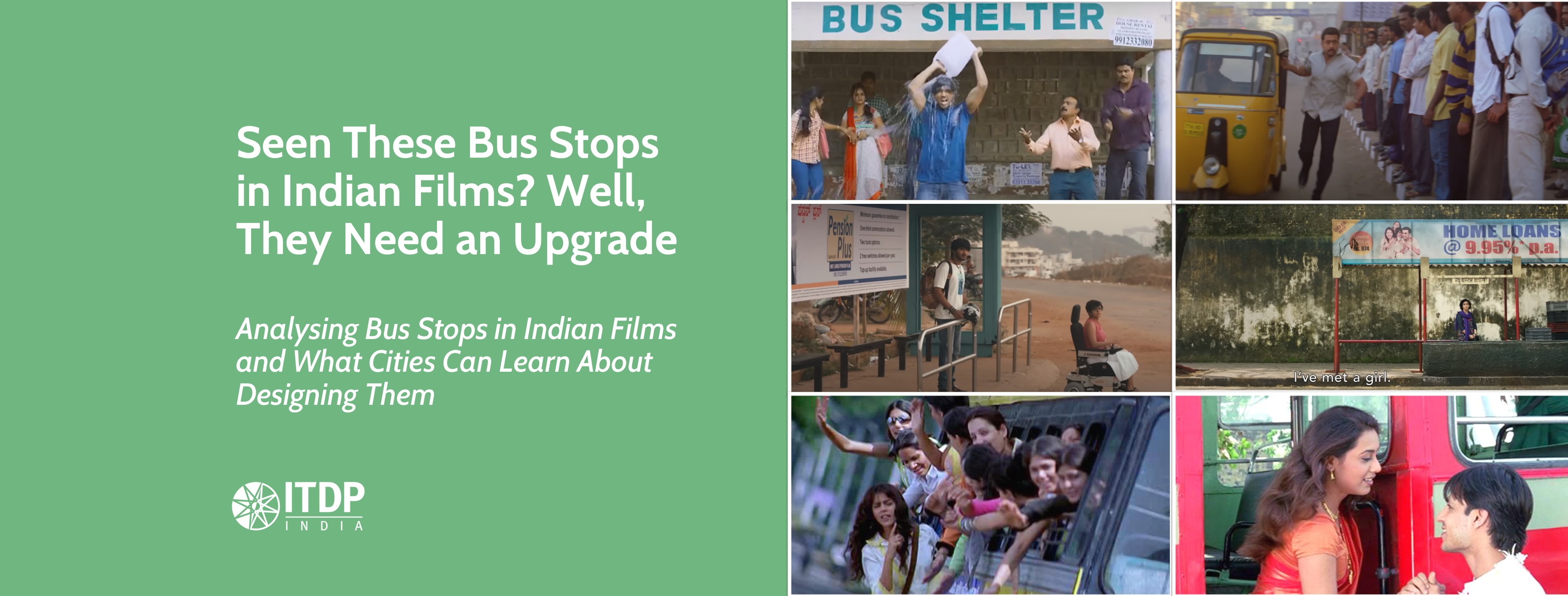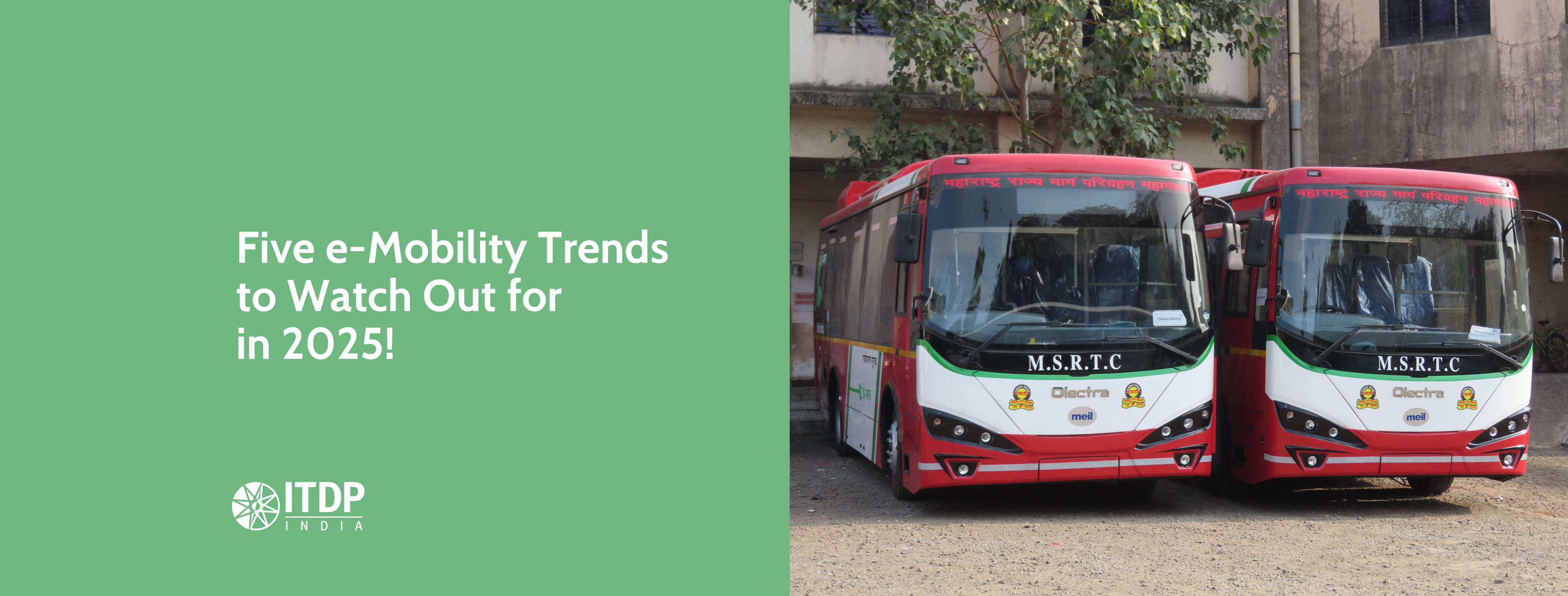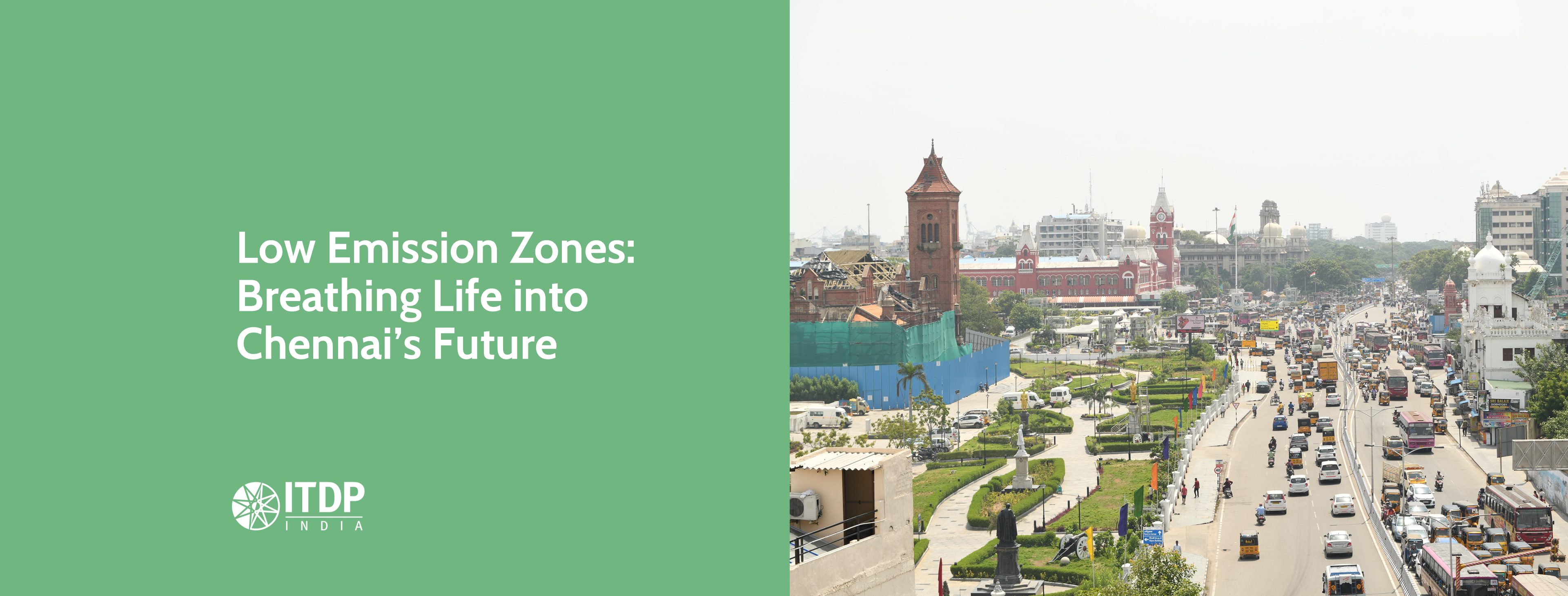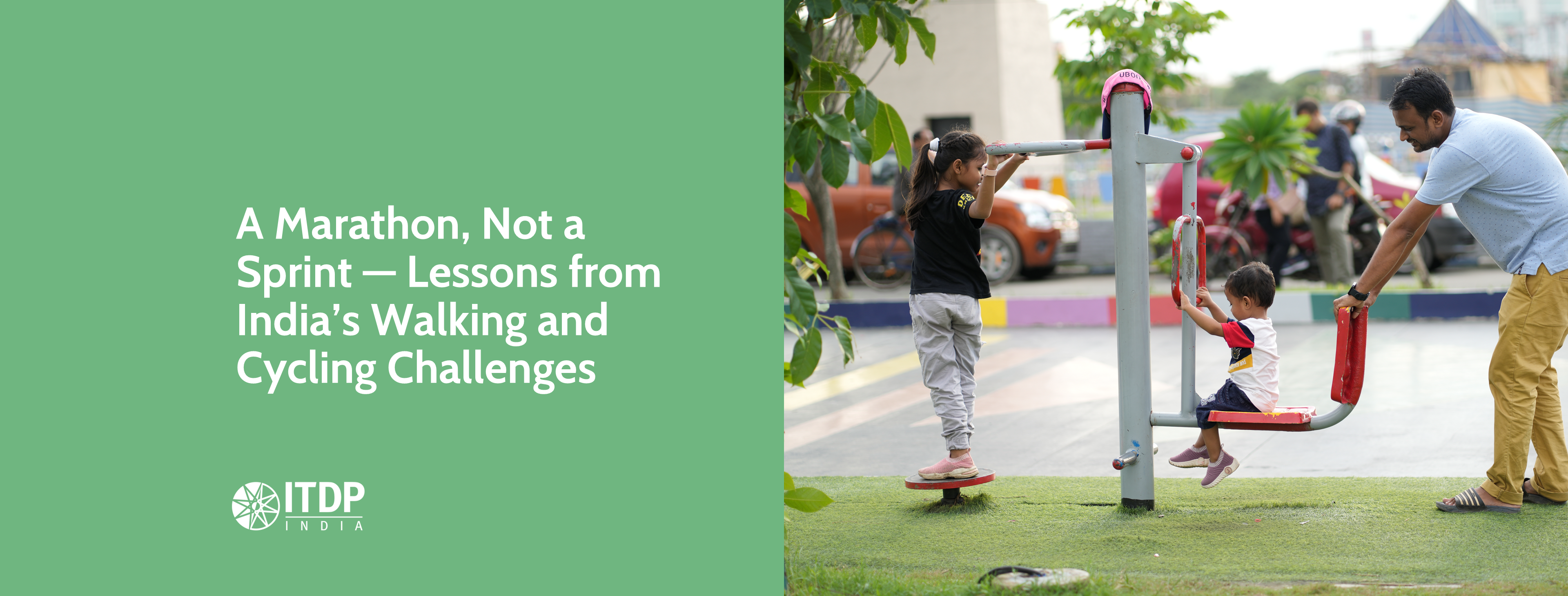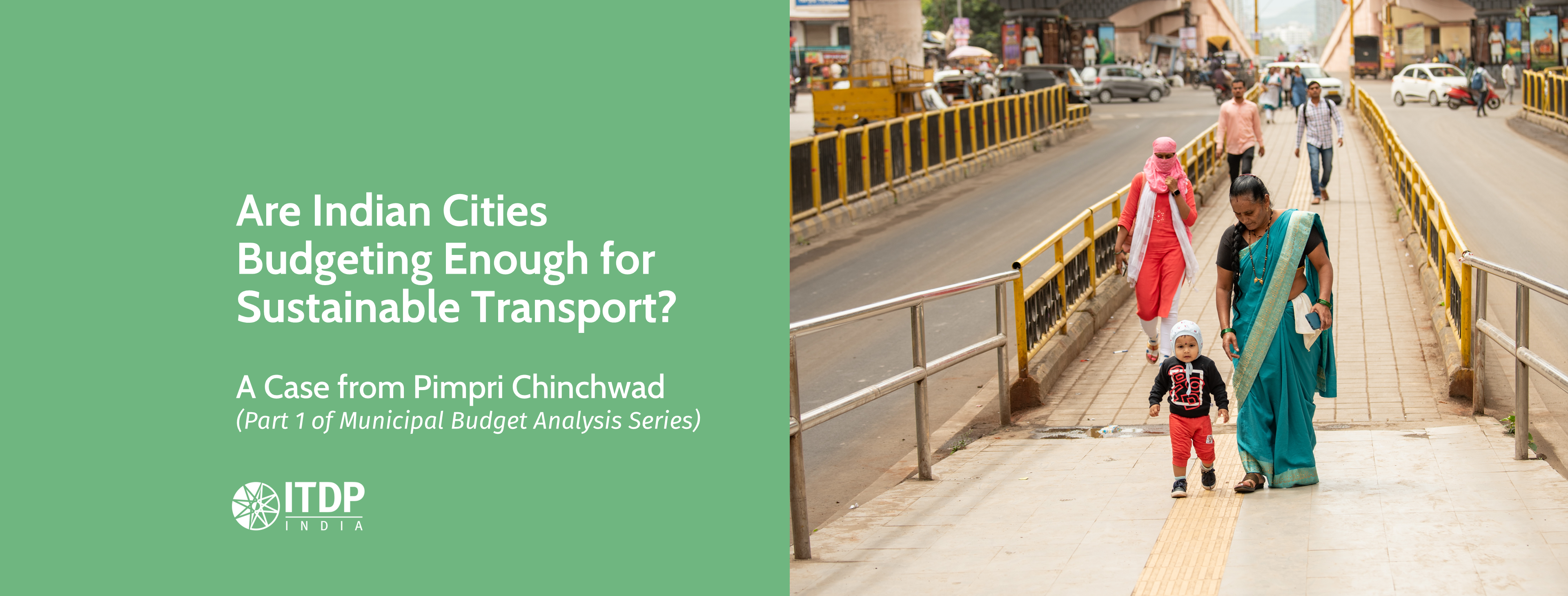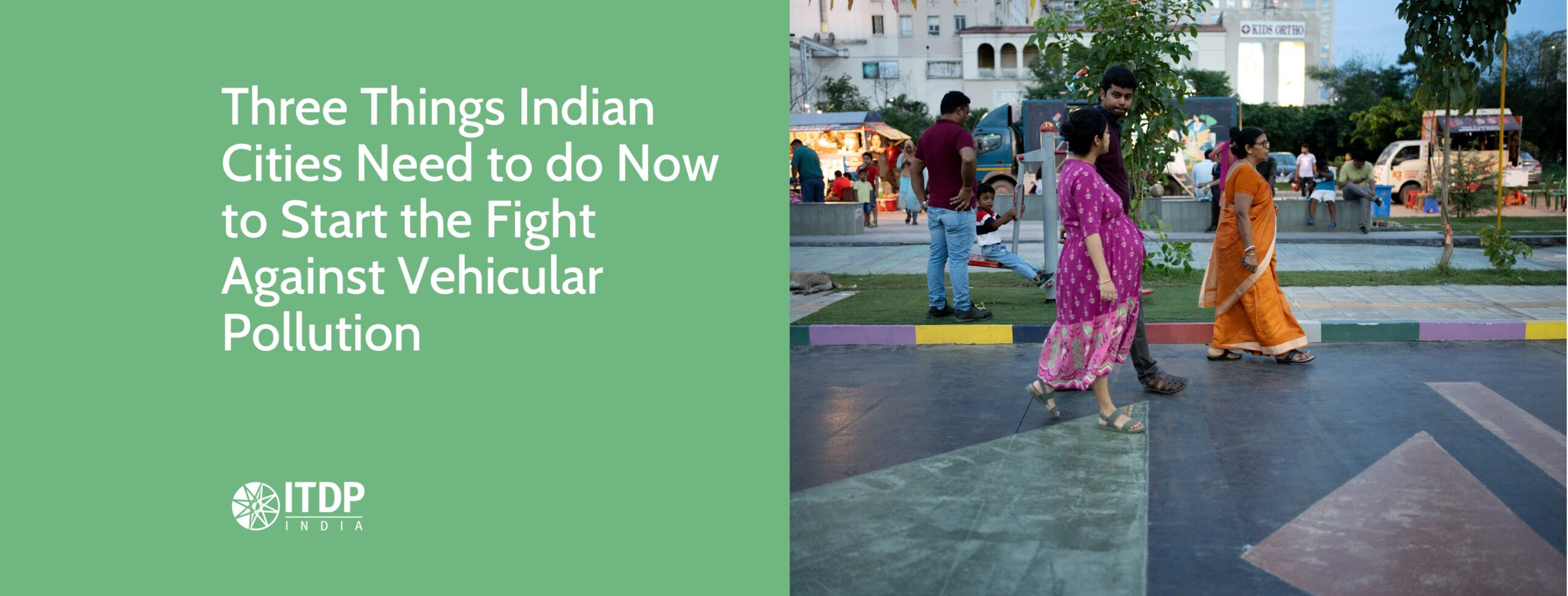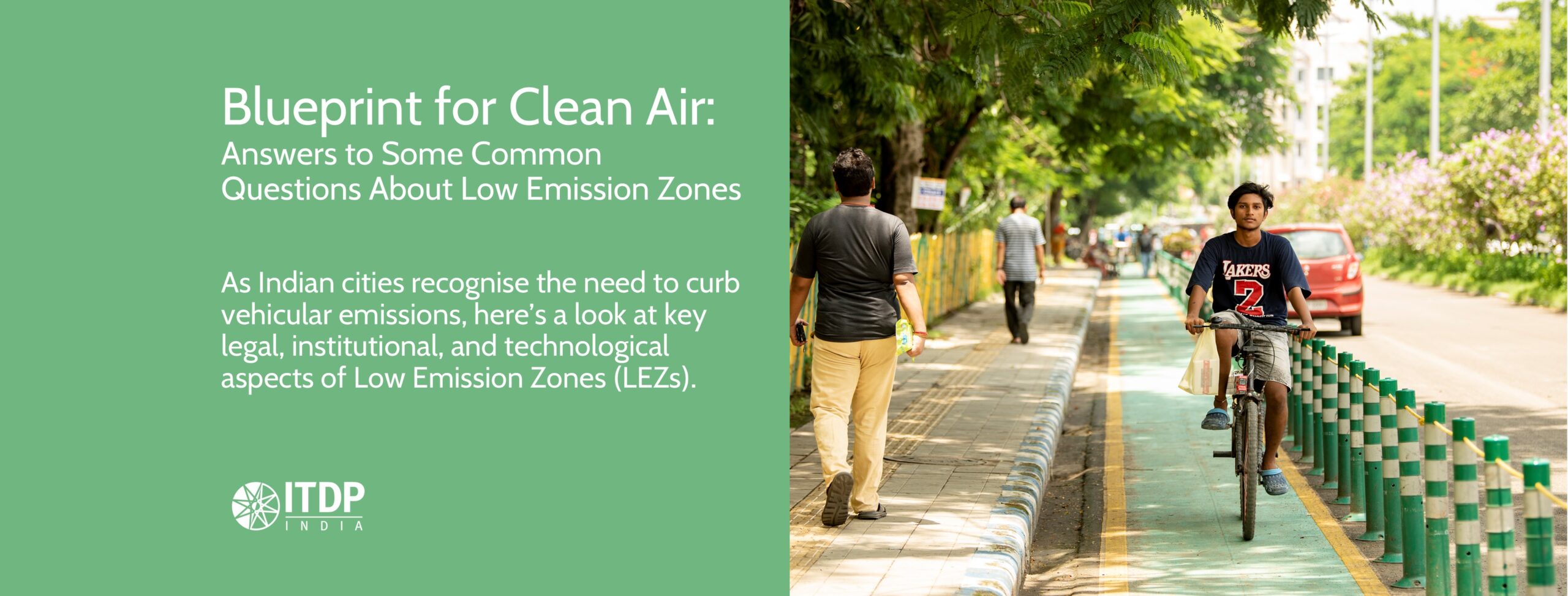Analysing Bus Stops in Indian Films and What Cities Can Learn about Designing Them
What do the 2000s Tamil classic Alaipayuthey (remade in Hindi as Saathiya), the 2014 Malayalam gem Bangalore Days, the 2019 Bollywood classic Photograph, and the 1994 Tamil favourite Kadhalan have in common?
They all celebrate the unassuming yet iconic presence of humble buses and public transit in Indian cities. From chance meetings to quiet reflections, the buses and bus stops often become a beautiful backdrops for emotional moments in these films.
So, while Alaipayuthey features rendezvous on Chennai’s MTC buses between the lead couple after their secret wedding. In Bangalore Days, Dulquer Salmaan’s character earns Parvathy Thiruvothu’s trust, who is a wheelchair user, by ensuring a BMTC bus halts for her. Photograph and Gully Boy use Mumbai’s BEST buses as settings for the tender moments in their love story.
But while buses take centre stage, the bus stops in these films—and in real life—tell a less flattering story. Often portrayed as shabby structures with crumbling roofs, no seating, and little to no information, they barely meet basic commuter needs.
What if these bus stops were designed better? What if they offered ramps for wheelchair users, real-time route information, and a safe, welcoming environment, both in reel and real life?
This got us thinking—what if bus stops were designed better? Wouldn’t that improve the overall bus commute experience? Around the world, transit infrastructure is increasingly recognised as essential social infrastructure—one that connects urban and rural communities and fosters social interactions. To serve this purpose effectively, it must be consciously designed.
With over 5.6 crore public transport passengers in India relying on buses, well-designed bus stops are crucial for safe and efficient mobility. Poorly planned stops lead to confused passengers, poor patronage, ultimately weakening the public transport system. Investing in better bus stop design is essential to creating safer, more efficient, and accessible transport systems that meet the needs of all—especially the elderly, women, children, and people with disabilities.
So, here’s ITDP India analysing what’s missing in some of the iconic Indian bus stops in Indian cinema, from the lens of four aspects: Information, Accessibility, Essential Features, and Safety.
1. Availability of Information
A bus stop must provide essential details to guide passengers. Without route maps, helplines, and connectivity details, a bus stop serves little purpose.
In this Telugu comedy Pelli Choopulu (2016), the protagonist, Vijay Devarakonda, is seen recording a fake video at the bus stop, to garner views on social media. While the comic timing is impeccable, we couldn’t help but notice what was wrong with the bus stop.
The bus stop lacks a bilingual or trilingual board with essential information such as bus routes, a helpline, or a local map missing. Without this, the purpose of the bus stop is negated, leaving passengers unable to access all transport options easily.
Some key information we recommend all bus stops to have are-
- Name of the bus stop
- Route maps showing bus routes and connections
- Real-time information with real-time updates on bus arrival times
- Type of buses that stop there, for example- Ordinary, Express etc.
- Concession-related information like, ‘Free tickets for women can be availed in pink ordinary services only’ or ‘Show local address proof to avail free ticket for women” etc.
- Helpline information


2. Ease of Access
Bus stops should be accessible to all, including young children, the elderly, and people with disabilities. If a stop is designed for the most vulnerable, it benefits everyone.
In Bangalore Days (2014), Parvathy Thiruvothu’s character, a wheelchair user, is seen waiting on the road instead of at the bus stop which is right next to her. This is likely due to the absence of a ramp, highlighting a critical gap in accessibility.
The lack of ramps and the inability of buses to stop closer to the platform make it difficult for wheelchair users to board safely.
To achieve this, we recommend, a ramped platform should be designed to align with the centre entrance of low-floor buses. Such ramps must ensure:
1.Connectivity from the footpath: Level changes between 6 mm and 15 mm should be accommodated, with a slope not exceeding 1:2 for ease of use.
2. Visibility and guidance: Level changes should be marked with contrasting colour strips or distinct flooring materials for clear visibility.
For visually impaired users, we recommend tactile blocks for navigation:
1. Tactile guiding blocks (line-type): These indicate a clear path or route to follow, ensuring smooth movement. According to the Accessibility Guidelines issued by MoRTH, one or two rows of tactile guidance tiles should be installed along the entire accessible route.
2. Tactile warning (dot blocks): These act as alerts for approaching hazards or changes in direction.


3. Essential Infrastructure
A well-designed bus stop is more than just a shed. Basic features like seating, a maintained roof, and a demarcated waiting area are essential.
In the film Photograph (2019), Sanya Malhotra, the female protagonist waits at a bus stop before meeting the male lead. The setting mirrors her nervous, sweet, and wistful emotions, but the bus stop itself leaves much to be desired.
The character—and countless others in real life—deserved a better public transport experience. The bare-bones bus stop, devoid of basic amenities like seating, WiFi, or even a dustbin, reflects the typical state of many bus stops in Indian cities. Similar issues were seen in this shot from Bommarillu (2006), a Telugu hit, and Om Shantu Oshana (2014), a Malayalam hit, where a basic shed-like structure doubles up as a bus stop, leaving us wishing for more.
Some essentials we identified are-
- Ensure the bus shelter roof has a clear height of 3 meters from the pavement.
- Provide a waiting space of 1.2 meters (excluding seating) as per IRC:70-2017 guidelines.
- Maintain a height difference of 12-15 cm for a single step, highlighted with a different color.
4. Passenger Safety at Bus Stop
The perception of safety plays a crucial role in influencing public transport users, particularly vulnerable groups such as children, women, and seniors, in their decision to use transit.
This is evident in a scene from the film Kakha Kakha (2003), where the film shows Jyothika and Suriya meet for the first time at a bus stop. Unfortunately, however, at the bus stop a woman is being harassed by some men to which Suriya who is passing by stops and intervenes.
Apart from the miscreants themselves, the bus stop’s design adds to the feeling of being unsafe here. It is dim lit and has dead space behind.
In Karnan (2021), a teenage girl’s father escorts her to a bus stop in another village, warning her about potential harassment. The lack of a nearby stop forces women to travel long distances in unsafe conditions.
We recommend that all bus stop owning agencies given particular focus on designing bus stops from lens of safety. For instance, the Transport for London guidelines emphasises that the perception of crime can significantly impact the desirability and usability of bus stops, making thoughtful design important. Oftentimes, dim lit spaces, dead space behind the stop can make it unsafe for women travellers and elderly. We recommend that not only should bus stops be close to where most users use them but also have thought put into while designing the transit infrastructure to eliminate dark spots or unsafe areas.
Conclusion
Bus stops are more than just waiting areas; they shape how people experience public transport. From their portrayal in films to their real-world impact, they influence accessibility, safety, and the confidence of the commuters in the transport system. While movies may romanticise bus journeys, the reality of inadequate bus stops is the first nail in the coffin that discourages people from choosing buses over other modes of transport.
Towards addressing this, ITDP India recently conducted an audit of 100 bus stops in Chennai. They highlight the need for better infrastructure that is user friendly. By assessing gaps, the study provides a roadmap for improving bus stops across cities. Fixing these issues isn’t just about ensuring convenience—it’s about giving citizens an inclusive and preferred choice of public transport.
If cities want to make sustainable transport work, they must start with these basics. Better bus stops mean comfortable waits, informed journeys, and a stronger public transport system. It is time for Indian cities to rethink and redesign bus stops—not just in movies, but in real life.

Written by Donita Jose, Senior Associate Communications
With inputs from Smrithi Prasad (Ex-ITDP), Aishwarya Soni (Ex-ITDP)
Edited by Kashmira Dubhash, Senior Programme Manager, Communications, Partnerships and Development




